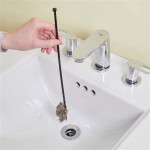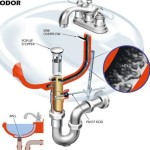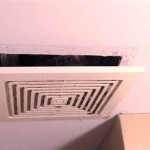Replacing a Bathroom Sink Tap: A Step-by-Step Guide
Replacing a bathroom sink tap is a common DIY project that homeowners can tackle with the right tools and knowledge. Whether your tap is leaking, dripping, or simply outdated, replacing it can improve the functionality and aesthetics of your bathroom. This guide provides a comprehensive step-by-step process for successfully replacing a bathroom sink tap.
1. Gathering the Necessary Tools and Materials
Before embarking on the replacement process, it is essential to gather the necessary tools and materials. The following list includes the commonly required items:
- New bathroom sink tap
- Adjustable wrench
- Channel-lock pliers
- Phillips screwdriver
- Flathead screwdriver
- Plumber's tape (Teflon tape)
- Basin wrench
- Bucket or container to catch water
- Towels or rags
- Safety glasses
- Gloves (optional)
It is crucial to note that the specific tools and materials may vary depending on the type of tap being installed. Therefore, it is advisable to check the manufacturer's instructions for specific recommendations.
2. Turning Off the Water Supply
The first step is to turn off the water supply to the sink. Locate the shut-off valves for the hot and cold water lines. These valves are typically located beneath the sink or on the wall behind it. Turn the valves clockwise to shut off the water supply completely. Once the valves are closed, turn on the sink tap to ensure that the water has stopped flowing.
3. Disconnecting the Existing Tap
With the water supply turned off, it is time to remove the old tap. Begin by loosening the nuts that connect the tap to the sink. These nuts are typically located beneath the sink and can be accessed with an adjustable wrench or channel-lock pliers. Carefully loosen and remove the nuts, paying attention to any washers or O-rings that may be present.
Next, disconnect the water supply lines from the old tap. These lines are usually made of flexible metal or plastic and are attached to the tap with compression fittings. Use a wrench to loosen and remove the fittings from the tap. It is important to be cautious while removing the lines to avoid damaging them.
4. Removing the Old Tap
Once the water supply lines are disconnected, the old tap can be removed from the sink. Depending on the type of tap, it may be necessary to use a basin wrench to loosen and remove the mounting nut from the underside of the sink. The basin wrench is a specially designed tool that allows you to turn the nut from above the sink.
After removing the mounting nut, the old tap can be lifted out of the sink. Take note of the location of any washers or O-rings that are attached to the tap. These will be needed for the new tap installation.
5. Installing the New Tap
With the old tap removed, it is time to install the new tap. The installation process is essentially the reverse of the removal process. Start by attaching the mounting nut to the new tap. This nut is typically located on the underside of the tap and is designed to secure the tap to the sink.
Next, carefully position the new tap into the sink and tighten the mounting nut using a basin wrench. Ensure that the tap is positioned correctly and that the mounting nut is secure. It is important to be cautious while tightening the nut to avoid over-tightening and damaging the tap or sink.
6. Connecting the Water Supply Lines
Once the tap is secured to the sink, it is time to connect the water supply lines. Start by wrapping the threads of the supply lines with plumber's tape. This tape helps to create a tight seal and prevent leaks. Attach the water supply lines to the tap using compression fittings. Ensure that the fittings are securely tightened but not over-tightened.
7. Testing for Leaks
After connecting the water supply lines, turn on the water supply valves to the sink. Check for any leaks around the tap, fittings, and supply lines. If there are any leaks, tighten the fittings or replace the washers or O-rings. Once the leaks are resolved, turn off the water supply valves and flush the tap to clear any debris.
8. Final Adjustments and Cleaning
The final step is to make any necessary adjustments to the tap, such as adjusting the handle position or setting the hot and cold water flow. Clean up any spilled water or debris and dispose of the old tap and materials properly.
By following these steps, you can successfully replace a bathroom sink tap. Remember to consult the manufacturer's instructions for specific details and to use caution throughout the process.

How To Easily Replace Basin Taps Step By

How To Install Basin Taps Replacing A Bathroom Sink Tap

How To Replace Bathroom Taps Big

How To Install Basin Taps Replacing A Bathroom Sink Tap
How To Change Bathroom Taps Everything You Need Know

Replacing A Bathroom Faucet Fine Homebuilding

Basin Bath Sink Pillar Tap Ceramic Disc Flow Valve Maintenance And Replacement

How To Replace A Basin Tap Big Bathroom

How To Replace Or Fit Basin Taps Lever Plumbing Tips

Diy How To Replace A Bathroom Sink Faucet Remove Install
Related Posts







